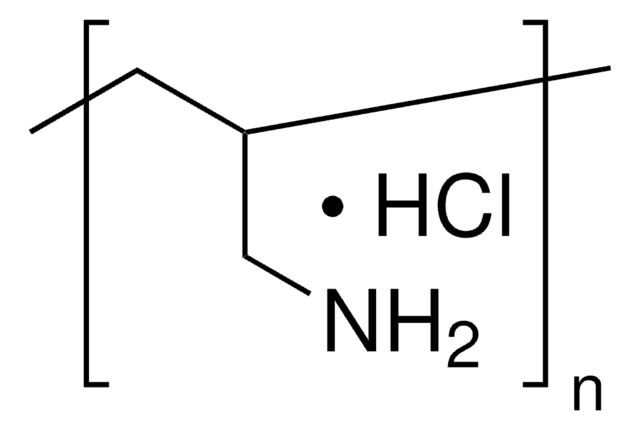764647
Polyethylenimine hydrochloride
linear, average Mn 10,000, PDI ≤1.5
Synonym(s):
Linear PEI HCl salt, Poly(ethylene imine hydrochloride), Poly(ethylene imine) HCl salt
About This Item
Recommended Products
Quality Level
form
solid
mol wt
average Mn 10,000
mp
276-280 °C (decomposition)
PDI
≤1.5
storage temp.
2-8°C
Looking for similar products? Visit Product Comparison Guide
Related Categories
Storage Class Code
11 - Combustible Solids
WGK
WGK 3
Flash Point(F)
Not applicable
Flash Point(C)
Not applicable
Choose from one of the most recent versions:
Already Own This Product?
Find documentation for the products that you have recently purchased in the Document Library.
Customers Also Viewed
Articles
Delivery of Nucleic Acids Using Polymers
Wide range of functional polymers for biomedical applications have been synthesized and structurally characterized. Several classes of polymers including biodegradable polymers, hydrophilic & amphiphilic polymers, and stimuli responsive polymers have been prepared using controlled and directed functionalization via "living" polymerization such as RAFT, ionic and ring opening polymerization. Selected polymers have been studied for their structure-properties relationship. "
Global Trade Item Number
| SKU | GTIN |
|---|---|
| 764647-1G | 4061826646458 |
Our team of scientists has experience in all areas of research including Life Science, Material Science, Chemical Synthesis, Chromatography, Analytical and many others.
Contact Technical Service










